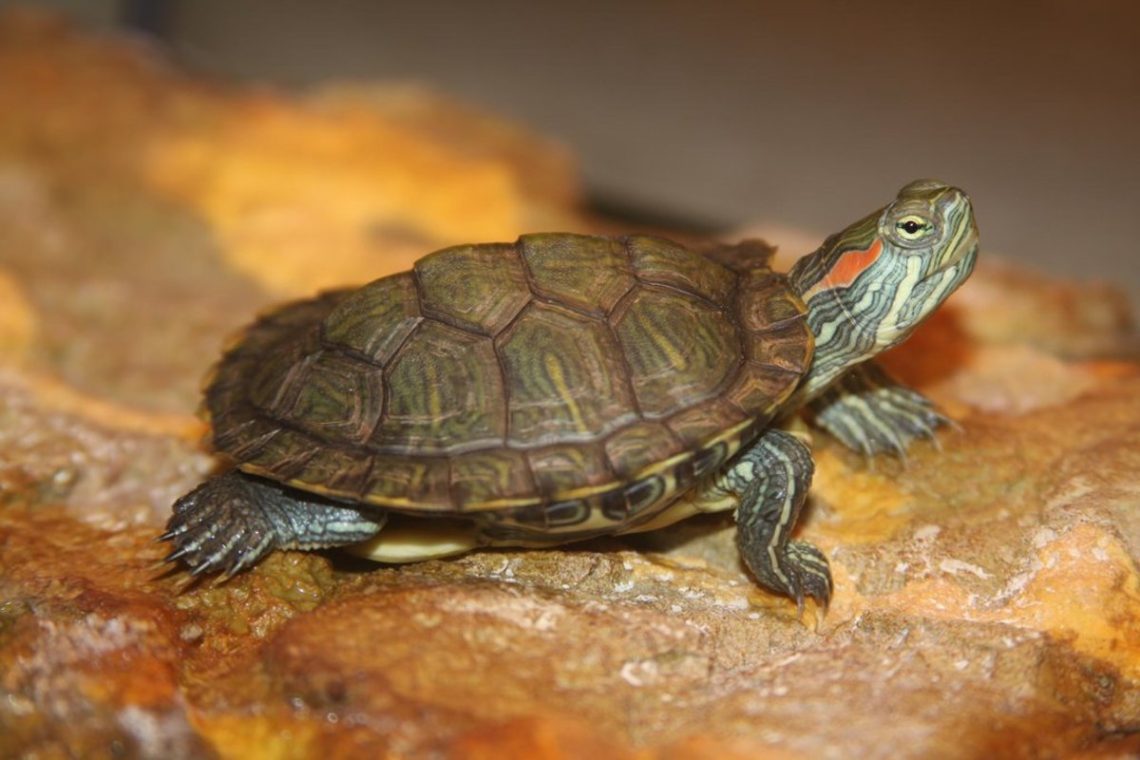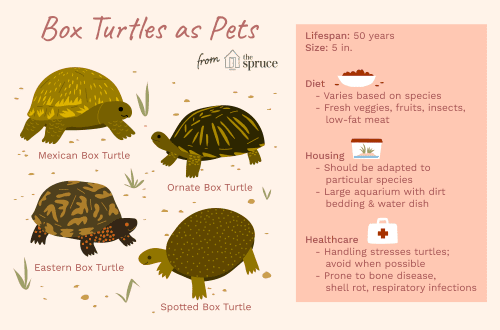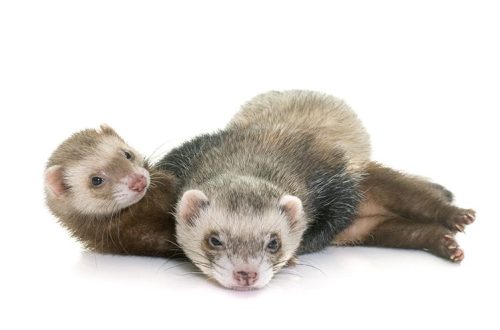
Red-eared tortoise: how many years does it live, what to feed the tortoise, why does it not eat and what is its care
Recently, it has become fashionable to keep some exotic animal at home, attracting with its unusualness. Among lovers of domestic turtles, red-eared (yellow-bellied) turtles contained in terrariums or aquariums are very popular. In order for the animal to feel comfortable and live for many years, you should know how to feed the red-eared turtle and properly care for it.
Contents
How many years do red-eared turtles live?
The animal belongs to the family of freshwater turtles and lives in Central and Southern Europe, South and North America, countries of Southeast Asia.
The red-eared turtle got its name because of the elongated bright red spot that is located behind its eye. The limbs, neck and head of the animal are light green with white stripes. In young turtles flat shell has a bright green color, with age, vertical yellow stripes appear on it. They are especially noticeable when the animal is in the water.
In good conditions, red-eared turtles live for about thirty years. However, with improper care, irresponsible or unprepared owners can greatly shorten the life of the animal.
Conditions for keeping red-eared turtles
For one animal, an aquarium is needed, with a volume of one hundred to one hundred and fifty liters and land, connected to water using a rough ladder. With insufficient space, the turtle will not swim and move.
In addition, the following conditions must also be met:
- the land surface in the turtle dwelling should be large enough, sloping, rough and gradually rising. All the necessary requirements are met by special islands sold in stores;
- The temperature of the water in the aquarium should be above room temperature. To heat it, you should purchase a thermostat;
- the air above the island must also be warm, so above it it is recommended to install a lamp incandescent;
- from the edge of the aquarium, the island should be at a level of thirty centimeters. When located close to the edge, nimble pets can escape;
- water is cleaned using external aquarium filters. The frequency of water changes depends on their effectiveness. The cleaner the water in the aquarium, the faster the young turtles will grow;
- animals need sunlight, so in the summer you have to walk with themand irradiated with ultraviolet light in winter. Suitable for this UV “Sun Lamp”, which will need to be applied three times a week for four minutes at a distance of thirty to fifty centimeters.
During the walk, the animal should be protected from direct sunlight, walking dogs and crows.
What does the red-eared turtle eat?
Animals are happy to eat granulated feed, minced meat and bloodworms. To prevent a calcium deficiency in your pet, boiled fish should be added to his diet from time to time.
Regardless of whether or not a turtle shows interest in fresh vegetables, they should always be given to her. They contain vitamins, calcium and fiber necessary for animals. As greenery, pets can be given aquarium plants.
Plant foods are especially important for older turtles. Seventy-five percent of their diet should consist of aquarium plants and fresh vegetables. It can be lettuce, plantain, dandelion, duckweed, nettle, pieces of zucchini or cucumber.
You can feed the animal with snails, shrimps, liver, squids. The meat does not need to be boiled.
You can not feed turtles with pork, lamb, crab sticks. Not too often they can be pampered with fodder insects, flour worm, coretra, bloodworm, hamarus.
How often should red-eared pets be fed?
Young turtles not yet a year old daily need to feed artificial food. Animals older than a year are fed every other day or two.
Newborn pets should receive fifty percent protein with food. Most tortoise foods meet these requirements.
Adult animals should be given twenty-five percent artificial food, and the rest of the diet should be occupied by various plants.
In the first days of the life of the red-eared turtle in new conditions, she needs to be given food, putting it at the very edge of the water.
After the pet gets used to it, it will be possible to feed it from a bowl on the island.
It should be noted that the composition and size of artificial feeds are different. Therefore, when purchasing them, you should focus on what is written by the manufacturers on the packaging.
Why is the red-eared slider not eating?
Turtles are cold-blooded animals that, depending on the environment and the state of the body, can slow down the metabolism. Therefore, adults can go without food for three months. Wherein they use their body reserves and lose forty percent of their weight. However, a sufficiently long fasting of a pet can lead to severe depletion of the body and various diseases.
Possible reasons
An animal may refuse food for several reasons:
- wrong content. The main condition for the life of these cold-blooded animals is an ambient temperature of twenty-six to thirty-five degrees. Therefore, if the pet not only does not eat, but still moves a little and does not open its eyes, then you should look at the readings of the water thermometer. If the water temperature is within normal limits, then the reason for the turtle’s refusal to eat is something else;
- suppression of the weak. If there are several red-eared turtles in one aquarium, then the hardiest individuals can dominate the weakest and take their food. Therefore oppressed animals should be fed separately;
- improper nutrition. If a young red-eared slider is not eating, it may have been switched to adult food early. Only after a year can pets be given meat, eggs and fish;
- change of season. October to January turtles begin to respond to a shorter day and therefore eat less. Starting from February, after daylight hours begin to increase, pets will again begin to eat;
- sexual behavior. If the animal began to behave more actively, but at the same time eat little, then most likely it is a male. During sexual activity, they abruptly stop eating and become restless. After the mating season is over, the animal’s appetite will be restored;
- diseases. If, with an increase in daylight hours and an increase in ambient temperature, the turtle refuses to eat, then it must be shown to the veterinarian.
During wintering, animals not only do not eat, but also do not drink. This leads to a drop in their body glucose levels and a lack of vitamins. Toxic elements increase their levels, which can lead to liver or kidney failure.
Another reason for starvation is conjunctivitis. If the pet looks good, but still does not eat anything, then his eyes should be examined.
Due to malnutrition, turtles can develop diabetes or stomatitis.
If the pet refuses food, then this does not mean that he is sick. A turtle can also starve after stress, weather changes or habitat changes. In addition, the food offered may not be suitable for them. Anyway need to look after your exotic pet and, if the hunger strike lasts for a long time, then be sure to seek advice from a veterinarian. With proper and caring care, the red-eared turtle will live long and delight its owners.





